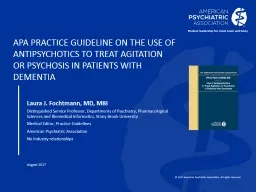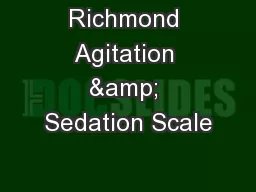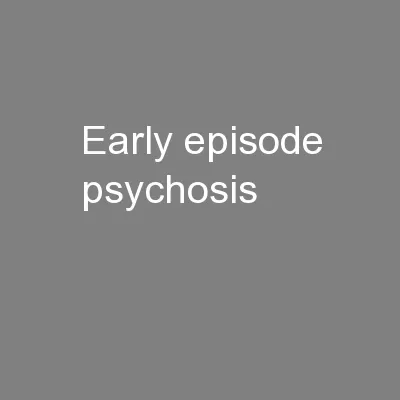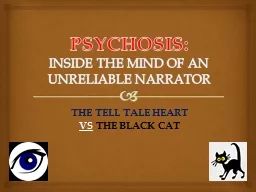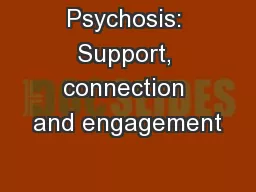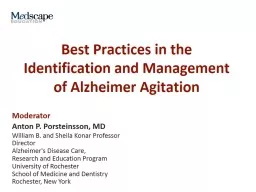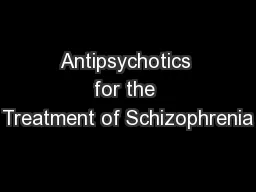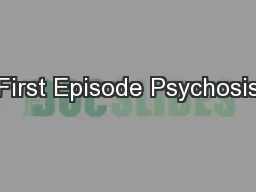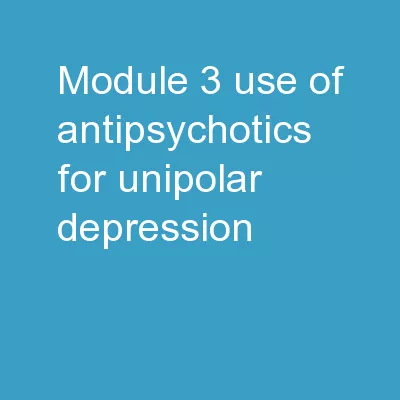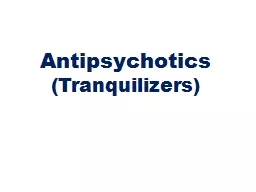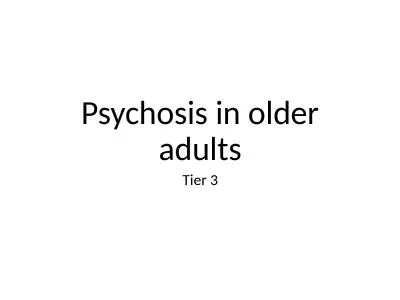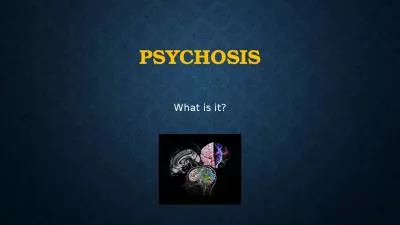PPT-APA Practice Guideline on the Use of Antipsychotics to Treat Agitation or Psychosis in
Author : myesha-ticknor | Published Date : 2018-10-22
Laura J Fochtmann MD MBI Distinguished Service Professor Departments of Psychiatry Pharmacological Sciences and Biomedical Informatics Stony Brook University Medical
Presentation Embed Code
Download Presentation
Download Presentation The PPT/PDF document "APA Practice Guideline on the Use of Ant..." is the property of its rightful owner. Permission is granted to download and print the materials on this website for personal, non-commercial use only, and to display it on your personal computer provided you do not modify the materials and that you retain all copyright notices contained in the materials. By downloading content from our website, you accept the terms of this agreement.
APA Practice Guideline on the Use of Antipsychotics to Treat Agitation or Psychosis in: Transcript
Download Rules Of Document
"APA Practice Guideline on the Use of Antipsychotics to Treat Agitation or Psychosis in"The content belongs to its owner. You may download and print it for personal use, without modification, and keep all copyright notices. By downloading, you agree to these terms.
Related Documents

